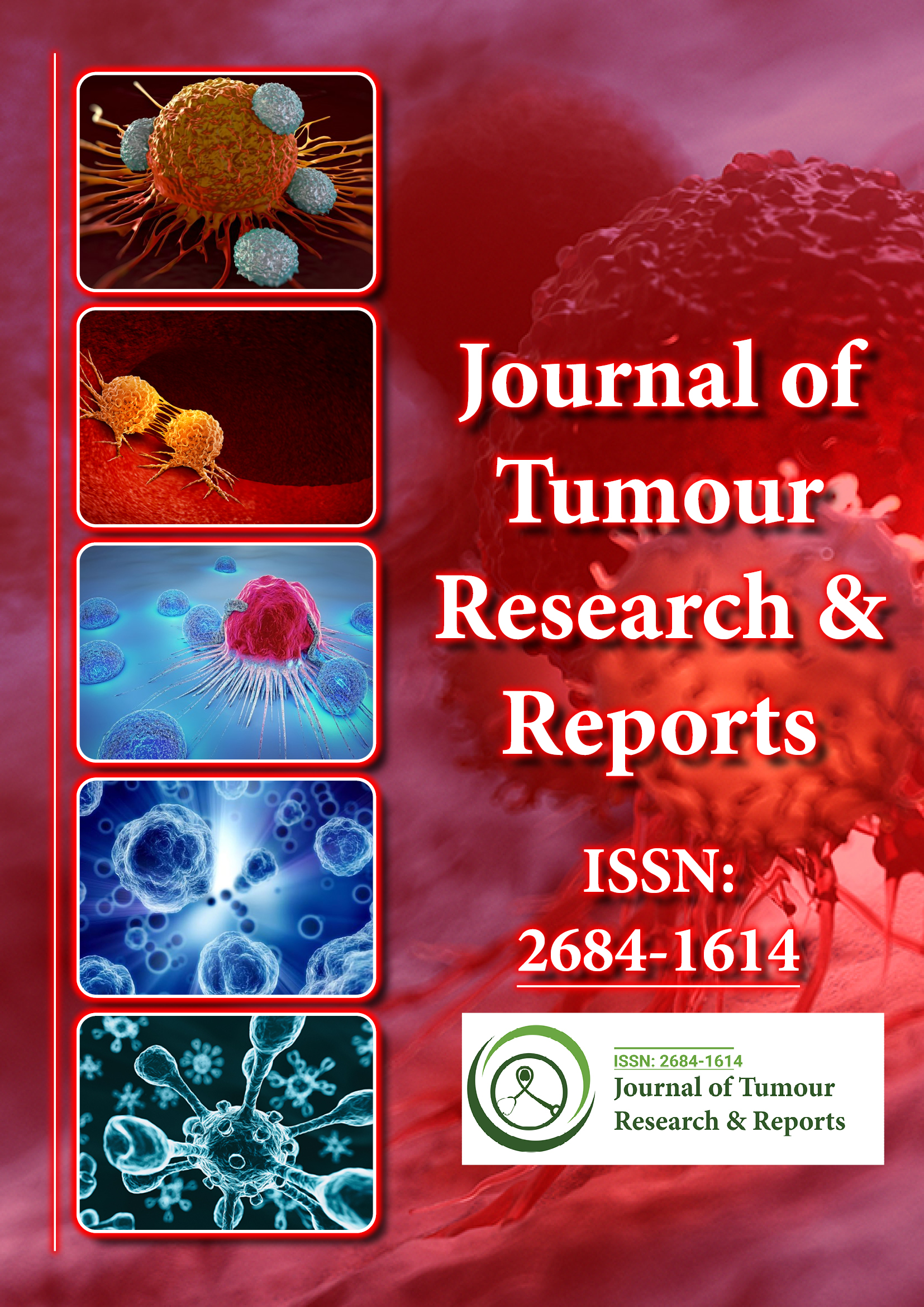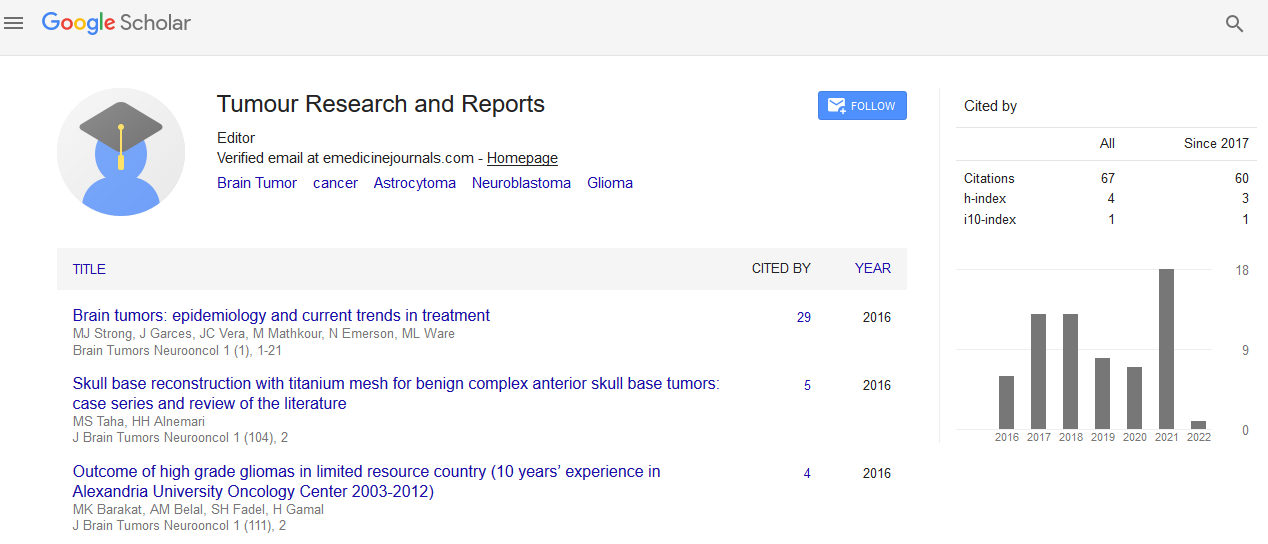Indexed In
- RefSeek
- Hamdard University
- EBSCO A-Z
- Google Scholar
Useful Links
Share This Page
Journal Flyer

Open Access Journals
- Agri and Aquaculture
- Biochemistry
- Bioinformatics & Systems Biology
- Business & Management
- Chemistry
- Clinical Sciences
- Engineering
- Food & Nutrition
- General Science
- Genetics & Molecular Biology
- Immunology & Microbiology
- Medical Sciences
- Neuroscience & Psychology
- Nursing & Health Care
- Pharmaceutical Sciences
Commentary - (2024) Volume 9, Issue 3
The Multifaceted Etiology of Acute Lymphoblastic Leukemia (ALL)
Philippe Chalandon*Received: 30-Aug-2024, Manuscript No. JTRR-24-27820; Editor assigned: 02-Sep-2024, Pre QC No. JTRR-24-27820 (PQ); Reviewed: 16-Sep-2024, QC No. JTRR-24-27820; Revised: 23-Sep-2024, Manuscript No. JTRR-24-27820 (R); Published: 30-Sep-2024, DOI: 10.35248/2684-1614.24.9.234
Description
Acute Lymphoblastic Leukemia (ALL) is a type of blood cancer that originates in the bone marrow, affecting white blood cells called lymphocytes. These cancerous lymphocytes grow uncontrollably, crowding out healthy blood cells, which can lead to severe health complications. While the exact causes of ALL remain unclear, a combination of genetic, environmental and lifestyle factors are believed to contribute to its development. Understanding these factors is essential in the ongoing effort to improve prevention, diagnosis and treatment strategies.
Genetics play a critical role in the development of ALL. Some individuals inherit genetic mutations that predispose them to the disease. For example, certain chromosomal abnormalities, such as the Philadelphia chromosome, are strongly associated with a higher risk of developing ALL. This mutation occurs when parts of two chromosomes (9 and 22) swap places, creating a new fusion gene called BCR-ABL1. This gene triggers abnormal cell growth and is a significant cause of leukemia in both adults and children.
Additionally, some genetic syndromes increase the likelihood of developing ALL. Conditions such as Down syndrome, Li- Fraumeni syndrome and neurofibromatosis type 1 are linked to a higher incidence of leukemia. These genetic disorders result in underlying cellular abnormalities that make the body more vulnerable to developing cancer. While these genetic predispositions cannot be altered, they help identify individuals at higher risk, enabling earlier surveillance and potentially lifesaving interventions.
Environmental factors are another contributing cause of ALL. Exposure to ionizing radiation is one of the most studied risk factors. Radiation therapy, particularly at high doses, is known to increase the risk of leukemia. For example, survivors of childhood cancers treated with radiation are at an increased risk of developing ALL later in life. Nuclear accidents and the aftermath of atomic bomb explosions, which expose individuals to high levels of radiation, have also shown increased rates of leukemia.
In addition to radiation, certain chemicals and toxins have been linked to ALL. Benzene, a chemical found in products like paints, solvents and cigarette smoke, has been associated with an elevated risk of leukemia. Prolonged exposure to these substances, especially in occupational settings, may increase the likelihood of developing the disease. Although the risks from environmental toxins are well-documented, their contribution to ALL in the general population remains relatively low, but they still represent a modifiable risk factor for those who are chronically exposed.
Interestingly, infections may also play a role in the development of ALL, though this relationship is complex. Some studies suggest that certain viral infections, such as the Epstein-Barr virus (EBV), which causes mononucleosis, may contribute to the onset of leukemia, particularly in individuals with compromised immune systems. EBV has been found in some cases of ALL, indicating a potential viral trigger for the disease.
Additionally, a weakened immune system can make the body more susceptible to the development of cancer, including leukemia. People with immunodeficiencies whether inherited, such as in Severe Combined Immunodeficiency (SCID), or acquired through conditions like HIV are at greater risk for developing ALL. The loss of the body’s ability to detect and destroy abnormal cells can lead to the unchecked proliferation of malignant lymphocytes.
Gender also plays a role, with males being more likely than females to develop ALL. While the precise cause of this gender disparity is unknown, hormonal differences, genetic factors, or immune system variations are often cited as potential contributors. Some cases of ALL result from inherited mutations that predispose individuals to develop the disease. For instance, familial leukemia cases have been reported, where multiple members of a family are diagnosed with ALL or related cancers. These familial patterns suggest a genetic component that may influence susceptibility to leukemia. Genetic screening and counseling are important for families with a history of leukemia to assess risk and take preventive measures.
Conclusion
While the precise causes of positive Acute Lymphoblastic Leukemia (ALL) remain elusive, current research points to a multifaceted interaction between genetic, environmental and immune factors. Genetic mutations, such as the Philadelphia chromosome, play a key role in the development of ALL, as do certain chromosomal abnormalities associated with genetic syndromes. Environmental exposures to chemicals like benzene and radiation also increase the risk, particularly among those exposed over long periods. Additionally, infections and immune system abnormalities contribute to the disease's onset, especially in those with weakened immune defenses.
Citation: Chalandon P (2024). The Multifaceted Etiology of Acute Lymphoblastic Leukemia (ALL). J Tum Res Reports. 9:234.
Copyright: © 2024 Chalandon P. This is an open access article distributed under the terms of the Creative Commons Attribution License, which permits unrestricted use, distribution, and reproduction in any medium, provided the original author and source are credited.

